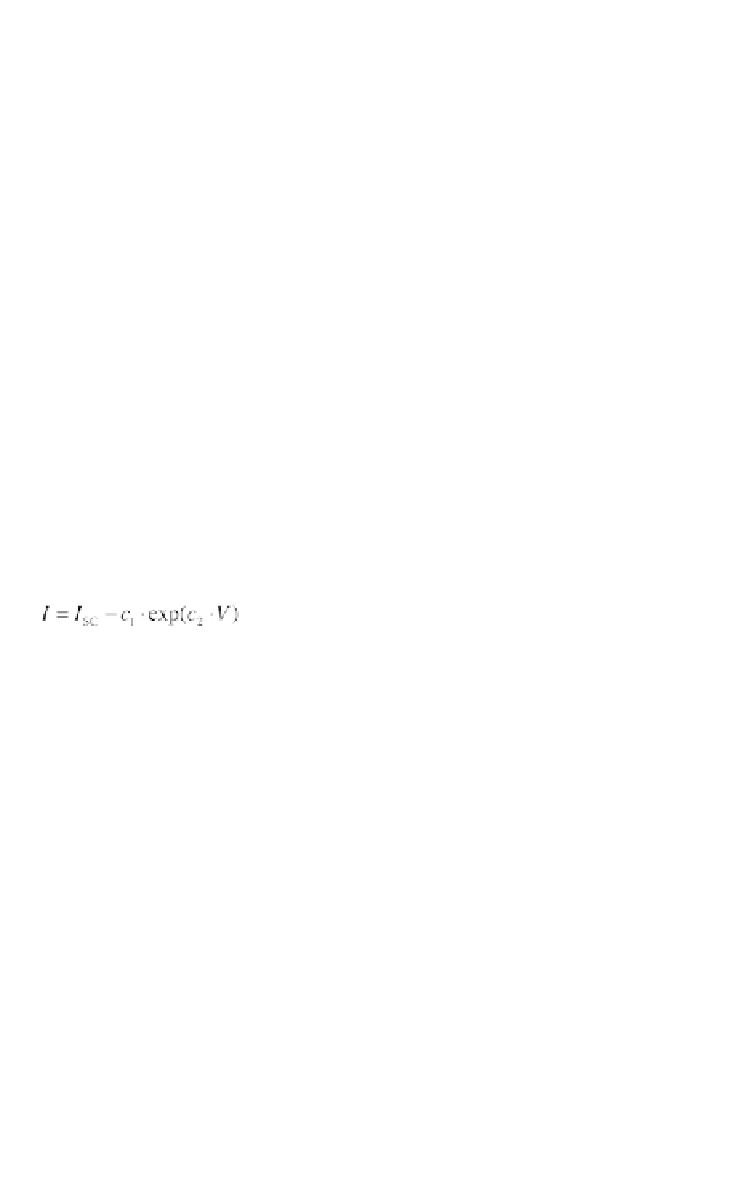Environmental Engineering Reference
In-Depth Information
Data sheets published by the module producers often give only a limited
number of parameters such as open circuit voltage
V
OC0
, short circuit current
I
SC0
, voltage
V
MPP0
and current
I
MPP0
at the MPP at an irradiance of
E
1000
=
1000 W/m
2
and a temperature of
ϑ
25
= 25°C as well as the temperature
coefficients
α
V
and
α
I
for voltage and current. The equations:
(4.57)
(4.58)
(4.59)
(4.60)
allow fast approximate module performance parameter estimation for
different temperatures
ϑ
and irradiances
E
. With the parameters
(4.61)
(4.62)
the relation between module current
I
and module voltage
V
can be found
approximately as:
(4.63)
Series connection under inhomogeneous conditions
During realistic operation, not all solar cells of a series connection experience
the same conditions. Soiling by leaves or bird excrement, or climatic influences
such as snow covering or visual obstructions by surroundings can shadow
some cells. This has a high influence on the module characteristics.
Modelling modules with non-identical I-V cell characteristics is
significantly more difficult. The following example assumes that 35 cells of a
module with 36 series-connected cells are irradiated identically (Quaschning
and Hanitsch, 1996). The remaining cell experiences an irradiance reduced by
75 per cent. Even in this case the current through all cells is the same. The
module characteristics can be found by choosing a range of currents from zero
to the unshaded short circuit current. The voltages of the fully irradiated cells
V
F
and the shaded cell
V
S
are determined and added:
(4.64)
The module characteristic can be obtained when stopping at the short circuit
current of the partially shaded cell. However, this characteristic only covers a
small voltage range close to the module's open circuit voltage. Lower voltage








